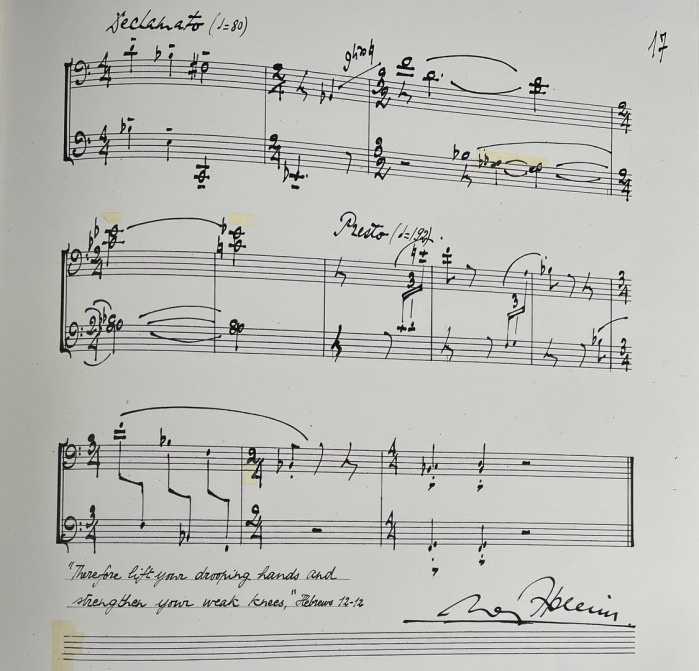
Quatre Etudes-Caprices
Title, Duration, Place, Year, Publisher, Dedicated to, Premiere (performer(s), place, date)
QUATRE ÉTUDES-CAPRICES for pedal solo, 9'30", Paris, 2000, Leduc, to Thomas Trotter, Thomas Trotter Birmingham, 00
Destinées au jeu du pédalier solo, ces pièces couvrent l'étendue Do1-Fa3 du clavier. La première Étude-Caprice, Scherzando, est de caractère sautillant et s'articule en arche. Le mouvement qui suit, Mesto, contraste fortement par son côté déclamatoire ; ici, les registres graves et aigus présentent des motifs distincts pouvant figurer un dialogue de type théâtral. Dans la deuxième partie de ce mouvement, se développe sur un balancement obstiné un nouveau motif tenebroso, dans l'extrême grave. La troisième pièce, Giocoso, présente l'aspect d'une badinerie avec un thème « à la Stravinsky ». La dernière Étude-Caprice, Alla russa, juxtapose trois strophes en style de toccata.
Intended as pedal keyboard solos, these organ pieces cover the range C1-F3. The first Étude-Caprice, Scherzando, is a bouncy piece in arch form. The declamatory style of the second, Mesto, forms a striking contrast: bass and treble registers set out distinct motives as though dialoguing in a play. In the second part of this movement, a new motive, tenebroso, is developed over a swaying ostinato in the lowest register. The third piece,Giocoso, is a badinerie (banter) with a Stravinskian theme. The last Étude-Caprice, Alla russa, juxtaposes three strophes in toccata style.
Diese Stücke sind ganz dem Pedal-Spiel vorbehalten, wobei die Pedaltastatur in einem Umfang von C1 bis F3 in Anspruch genommen wird. Die erste Étude-Caprice, Scherzando, weist einen hüpfenden Bewegungsmodus auf und hat Bogenform. Einen starken Gegensatz bildet aufgrund seines deklamatorischen Stils der folgende Satz, Mesto; die hohen und die tiefen Register exponieren kontrastierende Motive, so daß sich fast eine Art theatralischen Dialogs ergibt. Der zweite Teil dieses Satzes entwickelt in tiefster Lage vor dem Hintergrund einer Ostinato-Bewegung ein neues Motiv mit tenebroso-Charakter. Das dritte Stück, Giocoso, ist eine Badinerie mit einem Thema in der Art Strawinskys. Die letzte der vier Études-Caprices, Alla russa, wird von drei Strophen im Toccata-Stil gebildet.

